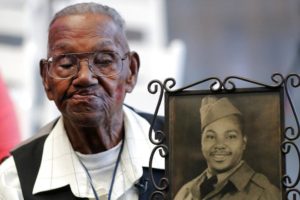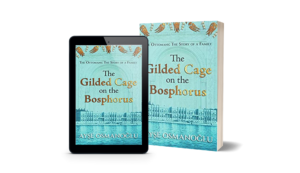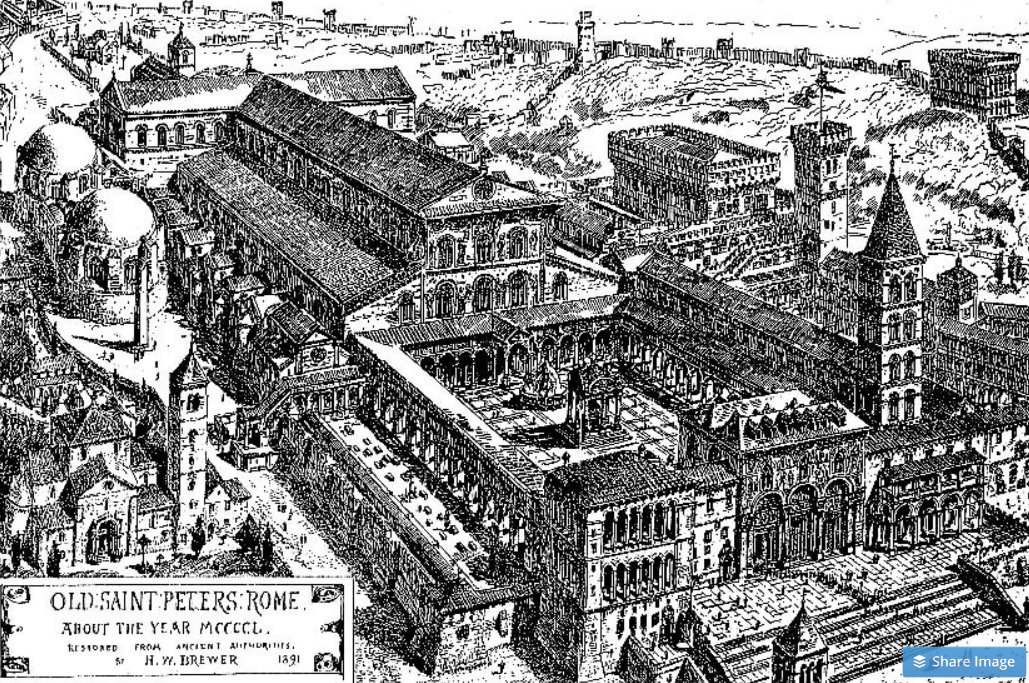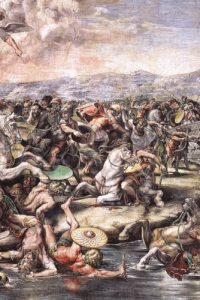Feb 23, 2022 | Editors' Blog, Historical
 “The Last Word” is a novel about longevity and life. Mix in a generous helping of World War II storytelling, and you have Owen Trimbel, a character inspired from actual interviews who discovers in 2038 he has become the last surviving World War II veteran. This reality will likely occur sometime during the next decade, perhaps in the late 30s or slightly beyond. It's also an eventuality that has been a focus and motivation of mine for some time.
“The Last Word” is a novel about longevity and life. Mix in a generous helping of World War II storytelling, and you have Owen Trimbel, a character inspired from actual interviews who discovers in 2038 he has become the last surviving World War II veteran. This reality will likely occur sometime during the next decade, perhaps in the late 30s or slightly beyond. It's also an eventuality that has been a focus and motivation of mine for some time.
 Why is this so important? Because World War II is an unparalleled event in human history. Those who remain and lived the experience will be the last we can question, who can share with us the give and take that is impossible to grasp through written or recorded material, especially by those of us who have benefitted all these years later through their efforts and sacrifices. The window is closing.
Why is this so important? Because World War II is an unparalleled event in human history. Those who remain and lived the experience will be the last we can question, who can share with us the give and take that is impossible to grasp through written or recorded material, especially by those of us who have benefitted all these years later through their efforts and sacrifices. The window is closing.
This brings me to Mr. Lawrence Brooks, who died last month at 112. Not only was he currently the oldest World War II veteran, he was likely the oldest individual in all of the United States when he passed. His is a story with many layers of complexity.
 Lawrence served from 1941-1945 in the 91st Engineer Regiment, and at that time, the military was still segregated. As author Stephen Ambrose put it, the United States fought the world’s worst racist in Hitler, but did so with a segregated army. Lawrence left the South and was stationed in the South Pacific, in and around Australia, New Guinea, and the Philippines. While most engineering regiments built bridges and airstrips, Lawrence’s duties included cooking and driving around the white officers in the unit. He survived close calls––an emergency during an engine failure, and a near miss by a sniper. He returned to his native New Orleans after the war and was married.
Lawrence served from 1941-1945 in the 91st Engineer Regiment, and at that time, the military was still segregated. As author Stephen Ambrose put it, the United States fought the world’s worst racist in Hitler, but did so with a segregated army. Lawrence left the South and was stationed in the South Pacific, in and around Australia, New Guinea, and the Philippines. While most engineering regiments built bridges and airstrips, Lawrence’s duties included cooking and driving around the white officers in the unit. He survived close calls––an emergency during an engine failure, and a near miss by a sniper. He returned to his native New Orleans after the war and was married.
 There is more to Lawrence’s story. He was in his 90s when Hurricane Katrina robbed him of both his wife and his home. Somehow, he pushed on, and developed a new relationship, this time with the National WWII Museum right there in his home town. He did interviews, and for many years, was invited to the museum to celebrate birthdays. During COVID, a parade was arranged in his honor (N’awlins, after all) that marched down his street and past his house. At 110, he proudly watched from his porch.
There is more to Lawrence’s story. He was in his 90s when Hurricane Katrina robbed him of both his wife and his home. Somehow, he pushed on, and developed a new relationship, this time with the National WWII Museum right there in his home town. He did interviews, and for many years, was invited to the museum to celebrate birthdays. During COVID, a parade was arranged in his honor (N’awlins, after all) that marched down his street and past his house. At 110, he proudly watched from his porch.
He had five children, another five step-children, and dozens of grand and great-grandchildren who will miss him. Even at 112, he was sharp, interactive, and had a winning sense of humor.
Lawrence was asked countless times for his secret to a long life, and he always answered, “Be nice to people.” Advice for the ages from 112-year-old Lawrence Brooks.
Find our more HERE!
Jun 7, 2021 | Editors' Blog, Historical
On 5th June 1944 Supreme Allied Commander in Europe, General Dwight D. Eisenhower sent coded messages to the French Resistance asking them to carry out acts of sabotage. Actions which would assist the D-Day landings in Normandy by diverting German forces. After the war ended the General estimated that the French Resistance had been worth “an extra six divisions.” Whilst it seems clear that in a battle scenario the resisters could not equal 90,000 fully armed and trained troops, their impact lay in the intelligence they provided and the guerrilla tactics they employed to disrupt services and supply lines.
Much of the intelligence used for the D-Day landings was supplied by the French Resistance.
Dordogne in South-West France was one area where the resistance was strong.
In answer to the General’s call the camp of Mauzac was liberated on the 7th June and between the 8th and 14th June battles took place as the Resistants attempted to delay the Panzer division Das Reich from joining German divisions in the North of France to combat the Allied invasion.
With an Axis submarine base in Bordeaux and an Aircraft base in Saint-Astier, near the Dordogne capital of Perigueux, the market town of Mussidan held an important strategic position, because of the convergence of rail and road links there and its location between Bordeaux and Perigueux. The battle of Mussidan took place on the 11th June 1944. The Resistance attempted to liberate the town but were forced to withdraw after the unexpected arrival of the Das Reich division. The Germans held the town and reprisals took place resulting in the death of fifty-one local men.

Resistance, Book 1, Liberty, whilst a fictional novel set in the fictional Dordogne village of Saint-Antoine-de-Double, has these events as a backdrop. The main characters, Sabine a farmer’s daughter who makes goat’s cheese and Hérisson together with his mysterious group of companions are drawn into the French Resistance believing they are embarking upon a great adventure. They soon discover themselves trapped in an impossible position from which it appears there can be no escape. Eilidh McGinness, the author of the novel lives and works in this area of Dordogne and has been fortunate in her research for the book because she has been able to visit important Resistance sites in the area, meet actual members of the French resistance and hear their stories at first hand.
The International Review of Books described the novel as “an addictive look at the French Resistance through the historical fiction tale of two members working to free France from the Nazis.”
The book is available from the 7th June 2021, with the e-book available at an introductory offer price of £0.99.
May 6, 2021 | Editors' Blog, Historical
Sultan Murad V and the Confession Album
The former Sultan Murad V had spent the morning in his study, where he had been busy sorting through the last of the boxes containing his private papers; he had burnt a good many letters and documents, and filed others away. Having felt the need to set his affairs in order, he had spent a lot of time during the winter cataloguing the large and valuable collection of rare books in his much-prized library and organising his musical compositions into bound volumes. However, he had left the mammoth task of dealing with his private papers to the very end. There had been so much to sift through; every sheet of paper had brought back its own special memory, and every time a new box was opened Murad had stopped to reminisce about the past. As a result, the exercise was taking far longer than he had anticipated. Determined to finish, he lifted off the lid of yet another box. This one was labelled ‘Souvenirs of London’.

Murad had visited London only once. In the summer of 1867, when he accompanied his uncle Sultan Abdülaziz on his state visit to Europe. What an exciting few weeks it had been! There had been countless balls, concerts, lavish dinners and receptions, all of which he had thoroughly enjoyed. Murad smiled to himself as he remembered dancing the quadrille with Princess Louise, the vivacious and enchanting daughter of Queen Victoria. He could still remember the Princess’s infectious laugh, her quick wit and the touch of her white kid glove in one of his hands as he rested the other lightly on her bare shoulder.
Murad peered into the box and rummaged through the items inside. A small formal photograph in an ebony frame lay on top, taken of him in one of the drawing rooms at Buckingham Palace. There were programmes from each of the concerts he had attended at Covent Garden, the Crystal Palace and the Guildhall. A folded sheet of yellowing paper detailing the official itinerary of the visit to Portsmouth where following a Naval Review of the fleet, Queen Victoria had invested the Sultan with the Order of the Garter on board the Royal Yacht. Some visiting cards and a few tokens, gifts from ladies of the court, were also in the box.  These ladies had been captivated by the mystery and allure that surrounded this handsome, surprisingly enlightened Crown Prince from the Orient, becoming spellbound by his dark, trusting eyes, his soft, gentle voice and his impeccably refined manners. Then he noticed the leather bound album lying at the bottom of the box. It had been a gift from Princess Louise. That popular drawing room amusement of the time – a ‘Confession Album’.
These ladies had been captivated by the mystery and allure that surrounded this handsome, surprisingly enlightened Crown Prince from the Orient, becoming spellbound by his dark, trusting eyes, his soft, gentle voice and his impeccably refined manners. Then he noticed the leather bound album lying at the bottom of the box. It had been a gift from Princess Louise. That popular drawing room amusement of the time – a ‘Confession Album’.
Murad lifted it out carefully. The princess had written her answers on the first page of the album in her confident swirling hand, and his host on that entertaining evening at Marlborough House, the Prince of Wales, had persuaded Murad to do the same. Recording their innermost thoughts and feelings as a keepsake in this manner had been the culmination of a mild flirtation that Murad and Louise had both enjoyed during the state visit.
Murad put on his spectacles and read both sets of answers, smiling to himself as he did so. It struck him immediately how the answers penned by his younger self brimmed with so much self-confidence, such great optimism and were filled with so much passion. “I wonder how my responses would differ if I wrote them today?” he pondered. He picked up a pencil, turned to the first blank page and began to complete the questionnaire for a second time…

Murad put down the pencil, closed the album and replaced it in the box. Then he sat down and looked wistfully out of the window at the glistening blue waters of the Bosphorus. He would burn the Confession Album – it would be of no interest to anyone else after he was gone…

To learn more about Sultan Murad V and his family, read The Gilded Cage on the Bosphorus! And to find out more about the author Ayşe Osmanoğlu, the Ottoman Dynasty or the book itself, please visit www.ayseosmanoglu.com
Catherine Kullmann
Oct 29, 2019 | Action & Adventure, Historical, Political, Regency, Uncategorized

View of Brussels
I must apologise for the delay in continuing with this series. To quote Rabbie Burns, and as today’s post shows, “The best-laid schemes o' mice an' men/Gang aft a-gley.”
At the end of 1814, we left the exiled Napoleon on Elba. Across the Atlantic, on January 8th 1815, American forces defeated the British in the Battle of New Orleans, the last major battle of the War of 1812. On January 21st, the mortal remains of the guillotined Marie Antoinette and Louis XVI were transferred in a sombre procession to the royal crypt in Saint-Denis. The restoration was complete. The map of Europe could be re-drawn again and the victorious allies agreed to meet in Vienna to discuss the new borders.
Meanwhile, thousands of Britons had decamped for the Continent. Their reasons were mixed; some simply wished to travel again while others hoped to leave their massive debts behind and live abroad on an ‘economical plan’. They soon established their own enclaves in Brussels and Paris where they continued to live the same life as they had at home, mixing with the same people and founding such bulwarks of English society as clubs and libraries where they could be sure to remain among themselves.
At the beginning of March, with trade with the European continent open again, Britain’s ruling classes looked to protect the interests of the landowners by introducing the Importation Bill. This was the first of the so-called Corn Laws, designed to prevent the importation of cheap foreign grain, thus keeping their incomes at war-time levels. They happily ignored the fact that as a result, the price of bread would be at an artificially high level, a fact that did not escape the poorer classes. In the ensuing riots, the windows of White’s club were broken and parliament had to be surrounded by a protective cordon of soldiers.
All rioting ceased when the news reached England that Napoleon had escaped from Elba and was marching towards Paris. He had indeed returned with the violets. The Importation Bill became law without further ado and Europe awaited the next developments with bated breath. A contemporary source summarised Napoleon’s progress as follows:
A Conversation between Two Gendarmes, modelled on THE TIMES:
First Gendarme: What is the news?
Second Gendarme: Ma foi! the news is short.
The tiger has broken out of his den.
The Monster was three days at sea
The Wretch has landed at Frejus
The Brigand has arrived at Grenoble
The Invader has entered Lyons
Napoleon slept last night at Fontainbleu
The Emperor enters the Thuilleries this day.
On March 19th, Louis XVIII and his family hurried away from the Tuilleries, only some hours before the Emperor’s triumphant return. The English who had flocked to Paris now as hastily left it, many heading for Brussels.

The allies, happily ensconced in Vienna, were caught wrong-footed. Armies recently dismissed were hastily recalled and on April 5th the Duke of Wellington arrived in Brussels to take command, initially of the British forces but soon, as Commander-in-Chief, also of the army of the United Netherlands. Enriched and enlivened by the influx of officers, the Brussels social whirl continued alongside the preparations for war. Would Napoleon sally across the French border to attack the allied forces or would he remain in France, daring them to invade?
The Duchess of Richmond appealed to Wellington himself for advice as to whether her ball, planned for June 15th, might go ahead. “Duchess, you may give your ball with the greatest safety, without fear of interruptions” was his reply.
Byron captures best what happened next:
There was a sound of revelry by night,
And Belgium's capital had gathered then
Her beauty and her chivalry, and bright
The lamps shone o'er fair women and brave men;
A thousand hearts beat happily; and when
Music arose with its voluptuous swell,
Soft eyes looked love to eyes which spake again,
And all went merry as a marriage-bell;
But hush! hark! a deep sound strikes like a rising knell!
Did ye not hear it?–No; 'twas but the wind,
Or the car rattling o'er the stony street;
On with the dance! let joy be unconfined;
No sleep till morn, when Youth and Pleasure meet
To chase the glowing Hours with flying feet.
But hark! that heavy sound breaks in once more,
As if the clouds its echo would repeat;
And nearer, clearer, deadlier than before!
Arm! arm! it is–it is–the cannon's opening roar
Napoleon had ‘humbugged’ him, as Wellington admitted to the Duke of Richmond, sending Ney to attack the British and Dutch-Belgian forces at Quatre Bras while he himself forced the Prussians to retreat at Ligny. But even as the wounded from these encounters were brought to Brussels, the Allied and French armies marched towards Waterloo, a small village south of Brussels on the far side from Brussels of the Forest of Soigné.

Overnight, regiments assembled on the Place Royale before marching out of Brussels, past the long procession of farm carts coming to market as usual. As one observer put it, After the army was gone, Brussels indeed seemed a perfect desert. Every countenance was marked with anxiety or melancholy—every heart was filled with anxious expectations….At about three o’clock [on the 16th], a furious cannonading was heard.
From then until the evening of the 18th, the residents of Brussels were torn between the hope of victory and fear of defeat. Some fled immediately towards Antwerp while others remained but prepared for instant flight. One after the other, the dreadful reports arrived: The Prussians had retreated, the Highland regiments that had been piped out of Brussels only that morning had been slaughtered, Wellington had been defeated; the French were at the gates…Every hour only served to add to the dismay.
On the night of the 17th, a violent thunderstorm came on, followed by torrents of rain which during the night, when the army were laying unsheltered upon the field of Waterloo, never ceased a single moment. On Sunday [the 18th] the terror and confusion [in Brussels] reached its highest point.
Meanwhile, on the plain of Waterloo, Wellington and Napoleon set out their armies as calmly as a grandmaster might dispose of his chessmen were he allowed a free hand in their positioning. It was mid-morning before the battle commenced, perhaps because the ground was too wet to allow the artillery to move its guns. But soon about two hundred thousand men were engaged in deadly combat. The battle waged all day until, near sunset, the invincible Imperial Guard was forced to retreat causing the surviving French to flee. The battle was over, the allies under Wellington had won the day, Napoleon was finally defeated, but at what cost?

The story of the battle is too well known for me to go into it in depth here. I have done this in my novel, The Murmur of Masks. For now, let us leave the last word to Byron.
The earth is cover’d thick with other clay,
Which her own clay shall cover, heap’d and pent,
Rider and horse,—friend, foe,—in one red burial blent!
Sep 30, 2019 | Action & Adventure, Editors' Blog, Historical, Interviews

The above is a drawing of Old St. Peter's, the building which had originally been built on the grounds of Nero's Circus in Rome, where many Christian martyrs had gone to their deaths, including St. Peter himself.
The catacombs under Nero's circus were used for the burial of the many enemies of Rome, criminals and Christians who died in the circus.
See a plan of Nero's circus below overlaid onto the plan of St. Peter's:

This site is where the first Christian martyrdoms in Rome took place in 65 A.D..
St. Peter is believed to have been crucified here in 67 A.D. along the spine of the circus with other Christians.
This is likely to have been a traumatic moment for Christians, as St. Peter had been with Christ during his mission and had been largely responsible for the rapid growth of Christianity in the decades following Christ's death.
Nero's Circus had been started by the Emperor Nero and finished by the emperor Caligula around 40 A.D.. It was a place of entertainment and cruelty, symbolic of the vicious nature of the Roman Empire.
An edict of toleration of Christianity was published in 311 A.D. and a second in 312 A.D., bringing to an end the persecution of Christians, but it is a long step from the ending of persecutions to the transfer of a huge and important tract of land and its buildings to the Christian church.
What we do know is that Old St. Peter's was started around 318 A.D., about 6 years after the victory of Constantine the Great over his rival for the western empire, the Emperor Maxentius. Old St. Peter's made use of some of the buildings that were part of Nero's Circus.
Why Constantine went this far, to grant this land, in his support for Christianity is a big question. To have won that battle in 312 A.D. required a pragmatic mind and the help of many groups, not just his legions.
My answer to this question, why did he go this far, is that Christians helped him to succeed. How they helped him on that fateful day in October, 312 A.D. is what I speculate on in my novel, The Road to the Bridge.
That battle has been the subject of many great works of art including the following by the master of the Italian Renaissance, Raphael, (died 1520.)

Speculation that Constantine saw a sign in the sky and had that sign painted on the shields of his legionaries, was most likely dreamt up afterwards, to present the victory as occurring with the support of God.
What the myth does reflect though is the real importance of the battle to the Christian church and the way it transformed that church.
To go from having your churches burnt and your members persecuted to being granted this site and many others, including the site of the Church of the Holy Sepulchre in Jerusalem, the location Jesus was believed to have been crucified, shows a major commitment to Christianity by Constantine.
You don't back one religion to such an extent for private reasons, I suggest, but for that religion's support for you winning power, and holding it.
The Christian church aligned itself fatefully with this emperor and ever since it has aligned itself with the state.
Whether this was a good thing, for the followers of someone who said, “there is more chance of a camel getting through the eye of a needle, than a rich man getting into heaven,” is something you can decide.
What I do believe is that without the lands of the Vatican the Catholic church right now would be a much diminished religious group. Perhaps the Catholic church might be renamed now as, Constantine's Catholic church? What do you think?
Laurence O'Bryan is the author of The Sign of the Blood (click here to learn more,) a novel about the rise to power of Constantine the Great, The Road to the Bridge (click here to learn more), about the lead up to the Battle of the Milvian Bridge and the final novel in the trilogy, The Cursed City (due late 2020), about the founding of Constantinople.
References:
-
-
-
-
Veronica Skye
Jul 24, 2019 | Historical, Romance

There is a period in ancient Chinese history that was called ‘The Spring and Autumn', referring to the time between 770 BC to 403 BC. Its name might elicit romantic thoughts from the unsuspecting, but it was one of the more brutal periods in the history of ancient China of constant turmoils.
Due to poor management, the vast Central Kingdom under the Zhou rulers had been broken up into hundreds of smaller fiefdoms in this period, oversaw by relatives of the central ruling family. These men held the title of Dukes and Barons. Among them were a handful of powerful states that were not satisfied with the size of their lands and its resources, and constantly invaded and took lands from their neighbors.

In the Duke & I, the archaic and peaceful tribe of Lirong , a once nomadic tribe which descended from the Mongolians that settled on the secluded Mount Blackmare suddenly found itself sandwiched between two superpowers, the Qin and the Jin.
The Qin would be the ultimate winner at the end of the five hundred years struggle and built the now world-famous Great Wall of China and the terracotta army tomb of the first Emperor of China who united all states in 221 BC, but at the time of the story at 672 BC, they were only one of the many who harboured ambitious dreams of unifying the country.
The Jin had foreseen the anger of leaving the Qin unchecked, and they started invading lands between them, including Lirong, Hu, Guo, Zheng, and many other smaller states to create buffer zones between them.
(I have included a link to a youtube video which showed how the map of ancient China changed over time. The light pink area on the top left that kept growing and growing is the State of Jin. The bright green one on the far left would be Qin. Lirong is too small to be identifiable on the map.)
After the army of Lirong was poorly defeated, the Duke of Jin demanded offerings from the Baron of Lirong. His two daughters, age unknown in history but no doubt already considered marriage-age in their teens in those times, were then sent off to be the brides of the Duke.
We do not know the names of his daughters from historical records, but we do know that the elder princess of Lirong was give the title of Consort Li (Liji) subsequently in the harem of the Duke of Jin after the Mountain Li, which mean a beautiful black female horse for its resemblance to the animal.
This was the backdrop of the story to the Duke and I, in which the Princess of Lirong will make her arduous journey with her younger sister from Lirong to Jin and began her long road to avenge for her country, as it would soon be annihilated after she arrived in the court.

Would you like to know more about the story of the Princess of Lirong and her heroic acts?
Read the Duke & I series to find out!
 “The Last Word” is a novel about longevity and life. Mix in a generous helping of World War II storytelling, and you have Owen Trimbel, a character inspired from actual interviews who discovers in 2038 he has become the last surviving World War II veteran. This reality will likely occur sometime during the next decade, perhaps in the late 30s or slightly beyond. It's also an eventuality that has been a focus and motivation of mine for some time.
“The Last Word” is a novel about longevity and life. Mix in a generous helping of World War II storytelling, and you have Owen Trimbel, a character inspired from actual interviews who discovers in 2038 he has become the last surviving World War II veteran. This reality will likely occur sometime during the next decade, perhaps in the late 30s or slightly beyond. It's also an eventuality that has been a focus and motivation of mine for some time. Why is this so important? Because World War II is an unparalleled event in human history. Those who remain and lived the experience will be the last we can question, who can share with us the give and take that is impossible to grasp through written or recorded material, especially by those of us who have benefitted all these years later through their efforts and sacrifices. The window is closing.
Why is this so important? Because World War II is an unparalleled event in human history. Those who remain and lived the experience will be the last we can question, who can share with us the give and take that is impossible to grasp through written or recorded material, especially by those of us who have benefitted all these years later through their efforts and sacrifices. The window is closing. Lawrence served from 1941-1945 in the 91st Engineer Regiment, and at that time, the military was still segregated. As author Stephen Ambrose put it, the United States fought the world’s worst racist in Hitler, but did so with a segregated army. Lawrence left the South and was stationed in the South Pacific, in and around Australia, New Guinea, and the Philippines. While most engineering regiments built bridges and airstrips, Lawrence’s duties included cooking and driving around the white officers in the unit. He survived close calls––an emergency during an engine failure, and a near miss by a sniper. He returned to his native New Orleans after the war and was married.
Lawrence served from 1941-1945 in the 91st Engineer Regiment, and at that time, the military was still segregated. As author Stephen Ambrose put it, the United States fought the world’s worst racist in Hitler, but did so with a segregated army. Lawrence left the South and was stationed in the South Pacific, in and around Australia, New Guinea, and the Philippines. While most engineering regiments built bridges and airstrips, Lawrence’s duties included cooking and driving around the white officers in the unit. He survived close calls––an emergency during an engine failure, and a near miss by a sniper. He returned to his native New Orleans after the war and was married. There is more to Lawrence’s story. He was in his 90s when Hurricane Katrina robbed him of both his wife and his home. Somehow, he pushed on, and developed a new relationship, this time with the National WWII Museum right there in his home town. He did interviews, and for many years, was invited to the museum to celebrate birthdays. During COVID, a parade was arranged in his honor (N’awlins, after all) that marched down his street and past his house. At 110, he proudly watched from his porch.
There is more to Lawrence’s story. He was in his 90s when Hurricane Katrina robbed him of both his wife and his home. Somehow, he pushed on, and developed a new relationship, this time with the National WWII Museum right there in his home town. He did interviews, and for many years, was invited to the museum to celebrate birthdays. During COVID, a parade was arranged in his honor (N’awlins, after all) that marched down his street and past his house. At 110, he proudly watched from his porch.


 These ladies had been captivated by the mystery and allure that surrounded this handsome, surprisingly enlightened Crown Prince from the Orient, becoming spellbound by his dark, trusting eyes, his soft, gentle voice and his impeccably refined manners. Then he noticed the leather bound album lying at the bottom of the box. It had been a gift from Princess Louise. That popular drawing room amusement of the time – a ‘Confession Album’.
These ladies had been captivated by the mystery and allure that surrounded this handsome, surprisingly enlightened Crown Prince from the Orient, becoming spellbound by his dark, trusting eyes, his soft, gentle voice and his impeccably refined manners. Then he noticed the leather bound album lying at the bottom of the box. It had been a gift from Princess Louise. That popular drawing room amusement of the time – a ‘Confession Album’.














